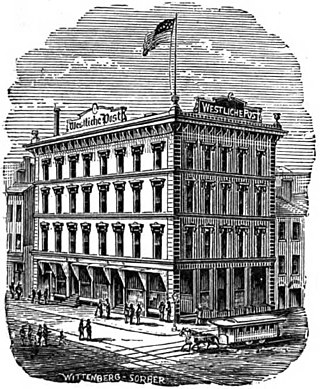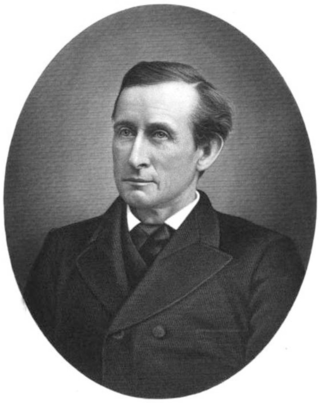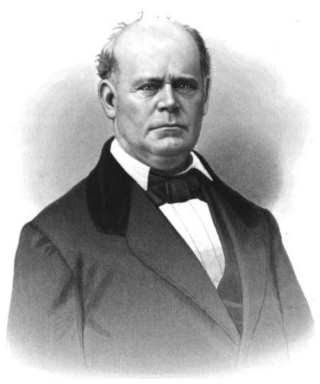
Joseph Pulitzer was a Hungarian-American politician and newspaper publisher of the St. Louis Post-Dispatch and the New York World. He became a leading national figure in the Democratic Party and was elected congressman from New York.

The St. Louis Post-Dispatch is a major regional newspaper based in St. Louis, Missouri, serving the St. Louis metropolitan area. It is the largest daily newspaper in the metropolitan area by circulation, surpassing the Belleville News-Democrat, Alton Telegraph, and Edwardsville Intelligencer. The publication has received 19 Pulitzer Prizes.
The St. Louis Globe-Democrat was originally a daily print newspaper based in St. Louis, Missouri, from 1852 until 1986. When the trademark registration on the name expired, it was then used as an unrelated free historically themed paper.

The following are the Pulitzer Prizes for 1952.
The following are the Pulitzer Prizes for 1959.
George Andrew Killenberg was a notable American newspaper editor.

Westliche Post was a German-language daily newspaper published in St. Louis, Missouri. The Westliche Post was Republican in politics. Carl Schurz was a part owner for a time, and served as a U.S. Senator from Missouri for a portion of that time.
George Duncan Bauman was the publisher of the St. Louis Globe-Democrat from 1967 until 1984.
The 1939 Missouri Tigers football team was an American football team that represented the University of Missouri in the Big Six Conference during the 1939 college football season. The team compiled an 8–2 record, won the Big 6 championship, lost to Georgia Tech in the 1940 Orange Bowl, outscored all opponents by a combined total of 155 to 79, and was ranked No. 6 in the final AP Poll. Don Faurot was the head coach for the fifth of 19 seasons. The team played its home games at Memorial Stadium in Columbia, Missouri.
The 1934 Washington University Bears football team was an American football team that represented Washington University in St. Louis as a member of the Missouri Valley Conference (MVC) during the 1934 college football season. In its third season under head coach Jimmy Conzelman, the team compiled a 7–3 record, won the MVC championship, and outscored opponents by a total of 212 to 59. The team played home games at Francis Field in St. Louis.
The 1922 Missouri Tigers football team was an American football team that represented the University of Missouri in the Missouri Valley Intercollegiate Athletic Association during the 1922 college football season. The team compiled a 5–3 record, finished in fourth place in the Missouri Valley conference, and outscored all opponents by a combined total of 98 to 90. Thomas Kelley was the head coach for his first and only season. The team played its home games at Rollins Field in Columbia, Missouri.

Charles Phillip Johnson was an American politician and attorney who served as Missouri lieutenant governor from 1873 until 1875.

George Robert Merrell Jr. was an American diplomat who served as the United States Ambassador to Ethiopia and United States Ambassador to Afghanistan. During his diplomatic career he served in Haiti, China, India, and Afghanistan.
Daniel M. Grissom (1829-1930) was an American journalist of the 19th Century.

Nathaniel Paschall (1802–1866) was an American journalist, the editor of the Missouri Republican.
The Missouri Republican was a newspaper founded in 1808 and headquartered in St. Louis, Missouri. Its predecessor was the Morning Gazette. It later changed its name to St. Louis Republic.

Walter B. Stevens (1848-1939) was a journalist and secretary and publicity director of the Louisiana Purchase Exposition Company and the author of books on the history of Missouri.
Joseph A. Dacus (1838–1885) was an American writer and journalist who wrote a history of outlaws Frank and Jesse James and a survey of the 1877 St. Louis general strike. He was also a member of the Missouri State Legislature.
The 1951 Washington University Bears football team was an American football team that represented Washington University in St. Louis as an independent during the 1951 college football season. Led by third-year head coach Irwin Uteritz, the Bears compiled a record of 5–4. Washington University played home games at Francis Field in St. Louis.
The 1933 Washington University Bears football team was an American football team that represented Washington University in St. Louis as a member of the Missouri Valley Conference (MVC) during the 1933 college football season. Led by second-year head coach Jimmy Conzelman, the Bears compiled an overall record of 4–5 with a mark of 1–2 in conference play, placing fourth in the MVC.








